Related Research Articles

The Dosadi Experiment is a 1977 science fiction novel by American writer Frank Herbert. It is the second full-length novel set in the ConSentiency universe established by Herbert in his short stories "A Matter of Traces" and "The Tactful Saboteur", and continued in his novel Whipping Star. It was first published as a four-part serial in Galaxy Science Fiction magazine from May to August, 1977.

The Berserker series is a series of space opera science fiction short stories and novels by Fred Saberhagen, in which robotic self-replicating machines strive to destroy all life.
Andrew "Ender" Wiggin is a fictional character from Orson Scott Card's 1985 science fiction novel Ender's Game and its sequels, as well as in the first part of the spin-off series, Ender's Shadow. The book series itself is an expansion, with some changes to detail, of Card's 1977 short story "Ender's Game."

Last and First Men: A Story of the Near and Far Future is a "future history" science fiction novel written in 1930 by the British author Olaf Stapledon. A work of unprecedented scale in the genre, it describes the history of humanity from the present onwards across two billion years and eighteen distinct human species, of which our own is the first. The book employs a narrative conceit that, under subtle inspiration, the novelist has unknowingly been dictated a channelled text from the last human species.
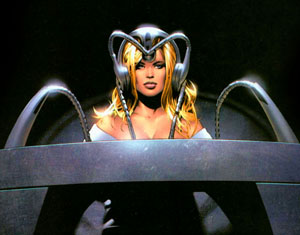
Cerebro is a fictional device appearing in American comic books published by Marvel Comics. The device is used by the X-Men to detect humans, specifically mutants. It was created by Professor X and Magneto, and was later enhanced by Dr. Hank McCoy.
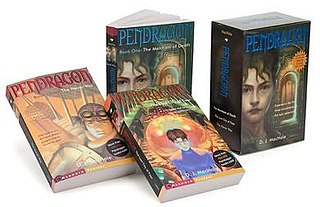
Pendragon: Journal of an Adventure Through Time and Space, commonly known as The Pendragon Adventure or simply Pendragon, is a series of ten young-adult science fiction and fantasy novels by American author D. J. MacHale, published from 2002 to 2009. The series chronicles the adventures of Bobby Pendragon, an American teenager who discovers that he must travel through time and space to prevent the destruction of the ten "territories": critical times and locations throughout the universe. The series has sold over a million copies.

Star Drive is a science fiction campaign setting that was published in 1998 by TSR, Inc. for the Alternity role-playing game. The first published setting for Alternity was provided in the Star Drive Campaign Setting book in 1998.

The Saga of Seven Suns is a series of seven space opera novels by American writer Kevin J. Anderson, published between 2002 and 2008. The books are set in a not-too-distant future where humans have colonized a number of other planets across the galaxy, thanks in part to technological assistance from an ancient alien race, the Ildirans. The series chronicles the universe-spanning war that erupts when humans inadvertently ignite the fury of a hidden empire of elemental aliens known as the hydrogues. Internal conflict is sparked within both the human and Ildiran empires as other ancient elemental races reappear to renew their own ancient war with the hydrogues.

World of Ptavvs is a science fiction novel by American writer Larry Niven, first published in 1966 and set in his Known Space universe. It was Niven's first published novel and is based on a 1965 magazine story of the same name.
Psionics, in tabletop role-playing games, is a broad category of fantastic abilities originating from the mind, similar to the psychic abilities that some people claim in reality.

The Patternist series is a group of science fiction novels by Octavia E. Butler that detail a secret history continuing from the Ancient Egyptian period to the far future that involves telepathic mind control and an extraterrestrial plague. A profile of Butler in Black Women in America notes that the themes of the series include "racial and gender-based animosity, the ethical implications of biological engineering, the question of what it means to be human, ethical and unethical uses of power, and how the assumption of power changes people."
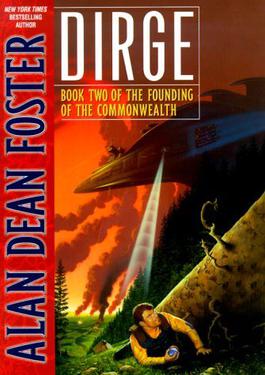
Dirge (2000) is a science fiction novel by American writer Alan Dean Foster. The full title is sometimes shown as Dirge: Book Two of The Founding of the Commonwealth.
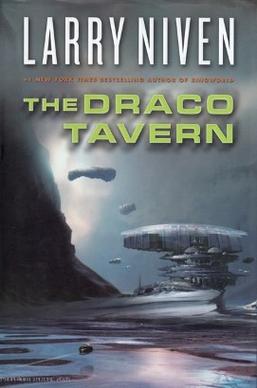
The Draco Tavern is a 2006 collection of science fiction short stories by American writer Larry Niven concerning the activities of Rick Schumann, the bartender of the Draco Tavern.
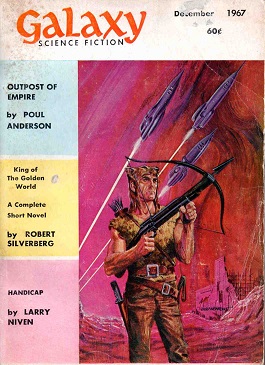
"The Handicapped" is a science fiction short story by Larry Niven, originally published in the December 1967 issue of Galaxy Science Fiction as "Handicap". Set in the Known Space universe, the story introduces the Grogs, the sessile but sentient inhabitants of the planet Down.
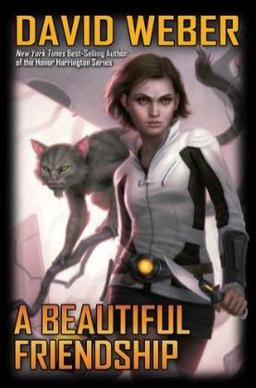
A Beautiful Friendship is a 2011 young adult science fiction novel by American author David Weber. Set in the fictional Honorverse, the book serves as a prequel to the main Honor Harrington series, which takes place hundreds of years later in the fictional timeline.

The Defiant Agents is a science fiction novel by American writer Andre Norton, the third book in her Time Traders series. It was first published in 1962, and as of 2012, had been reprinted in ten editions with cover changes, as well as twice in a combined edition with Key Out of Time. It is part of Norton's Forerunner universe.
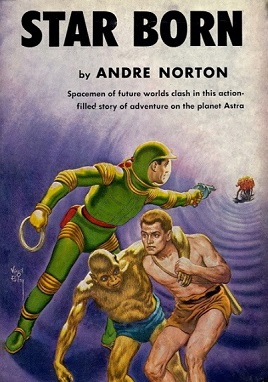
Star Born is a science fiction novel by American writer Andre Norton, first published in 1957 by World Publishing Company of Cleveland. This is the sequel to The Stars Are Ours! and continues that adventure three generations on.
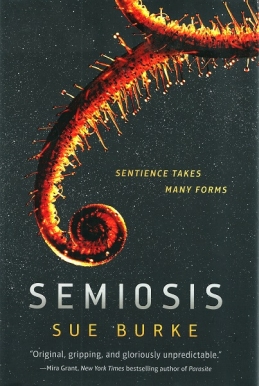
Semiosis is a 2018 science fiction novel by American writer and translator Sue Burke. It is her debut novel and is the first book of her Semiosis Duology series. It was first published in February 2018 in the United States by Tor Books, and in August 2018 in the United Kingdom by HarperVoyager. The book was translated into French by Florence Bury, and published in France in September 2019 by Albin Michel.
References
- ↑ "Fiction Book Review: A Call to Arms by Alan Dean Foster, Author Del Rey Books $18.95 (341p) ISBN 978-0-345-35855-4". PublishersWeekly.com. Retrieved 2020-07-15.
- ↑ A CALL TO ARMS | Kirkus Reviews.
- ↑ "Fiction Book Review: The False Mirror by Alan Dean Foster, Author Del Rey Books $19 (277p) ISBN 978-0-345-35856-1". PublishersWeekly.com. Retrieved 2020-07-15.